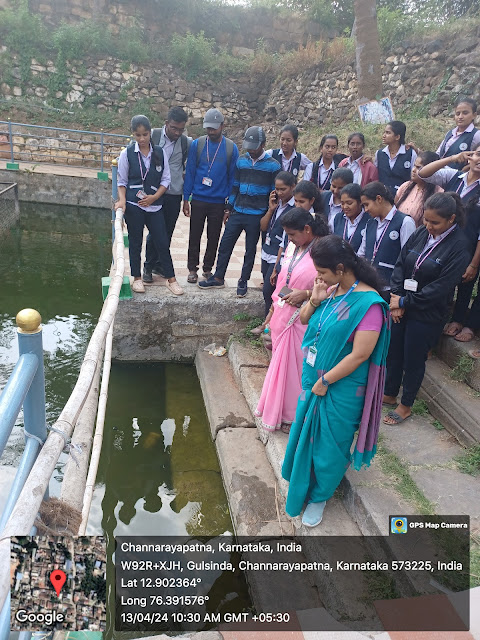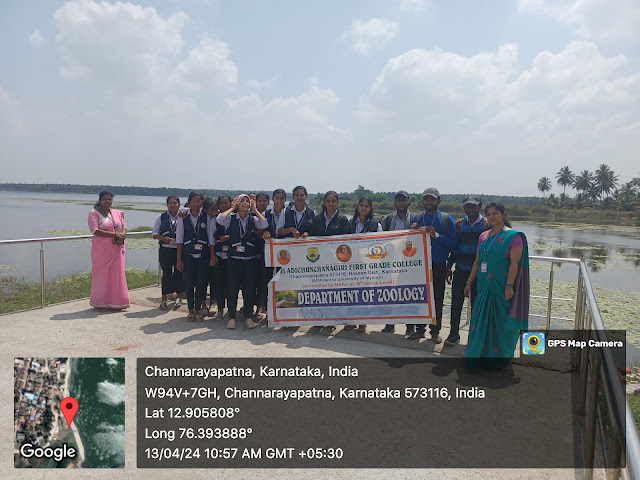In compliance with the syllabus pattern of the 6th semester NEP scheme BSC (Zoology), the Department of Zoology organized a field visit to Ragavendra Swamy Temple Pond and Channarayapatna Lake on April 13, 2024, with permission from Principal Dr. Manjunath M. K. and HOD of Zoology Dr. Nirupama M. along with all VI semester students and faculties. We arrived the pond by 10:00 am to study the pond ecosystem and to collect water samples for laboratory studies.
A pond ecosystem is a community of organisms that live in a pond. It is a freshwater ecosystem in which the various organisms rely on one another. The biotic factors of the pond ecosystem are classified into three categories. They are known as producers, consumers, and decomposers. We guided the students to differentiate producers, consumers and decomposers and also how abiotic factors also influenced on the development of biotic factors. Pond ecosystems provide a home for wildlife, including fish, turtles, frogs, and water birds. They also provide a habitat for plants like pond lilies and cattails. Ponds also play a vital role in cycling water and nutrients, like carbon and nitrogen, through the earth's system. Phytoplankton is the base of several aquatic food webs. In a balanced ecosystem, they provide food for a wide range of sea creatures. Phytoplankton, also known as microalgae, are similar to terrestrial plants in that they contain chlorophyll and require sunlight in order to live and grow. The zooplankton community is an important element of the aquatic food chain. These organisms serve as an intermediary species in the food chain, transferring energy from planktonic algae (primary producers) to the larger invertebrate predators and fish who in turn feed on them.
Although we have collected water sample and return to the college by 11.30 am and then observed under microscope and we got Algae, Diatoms, Paramecium and Euglena etc.








